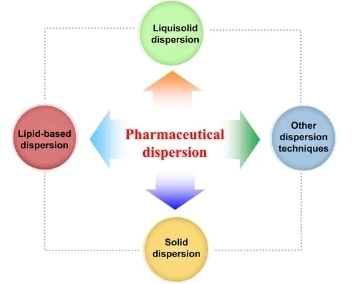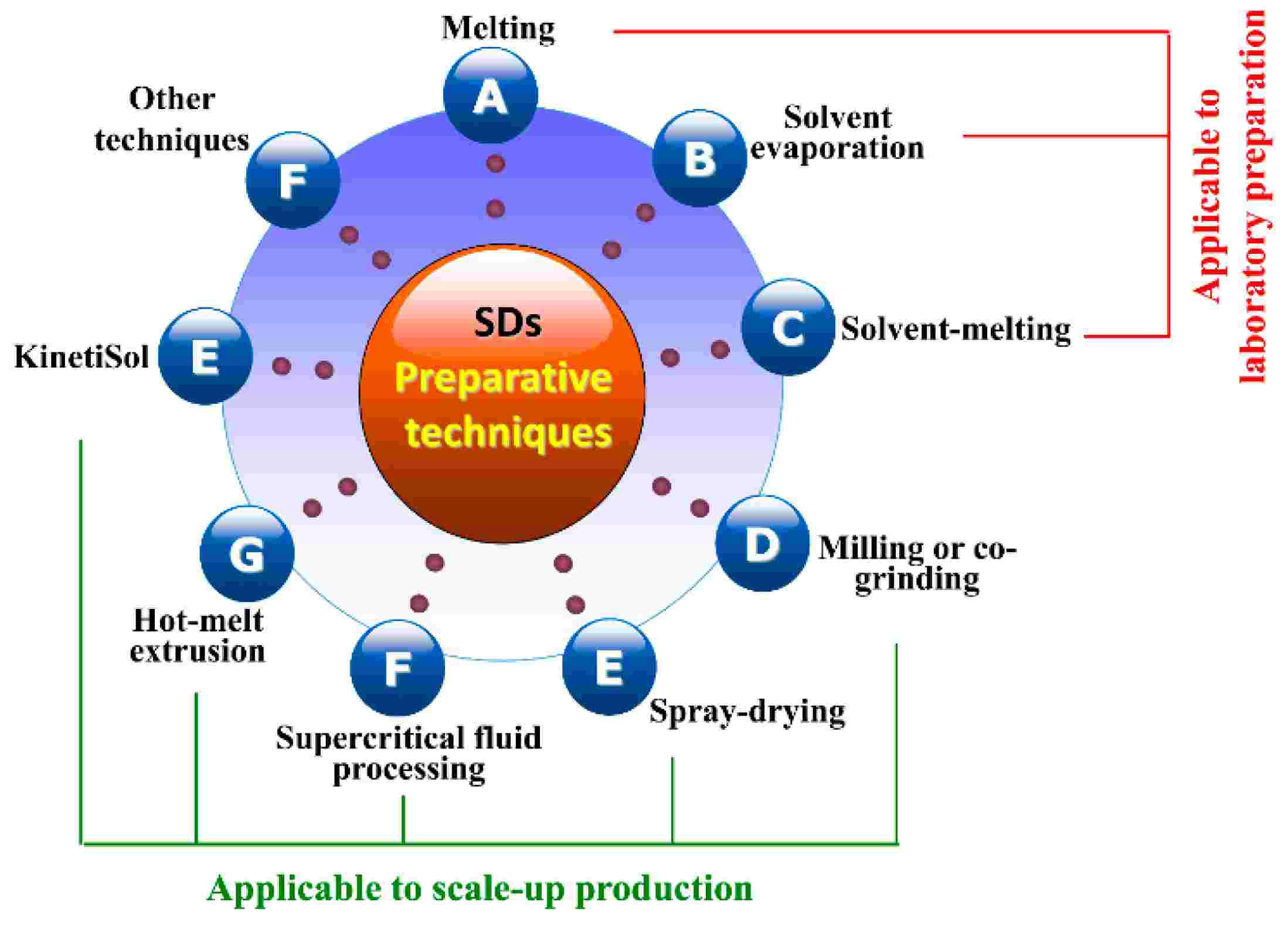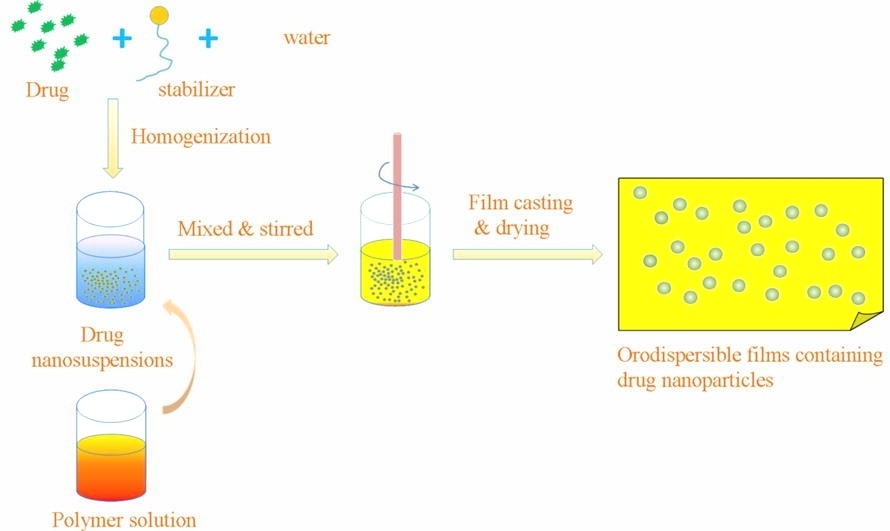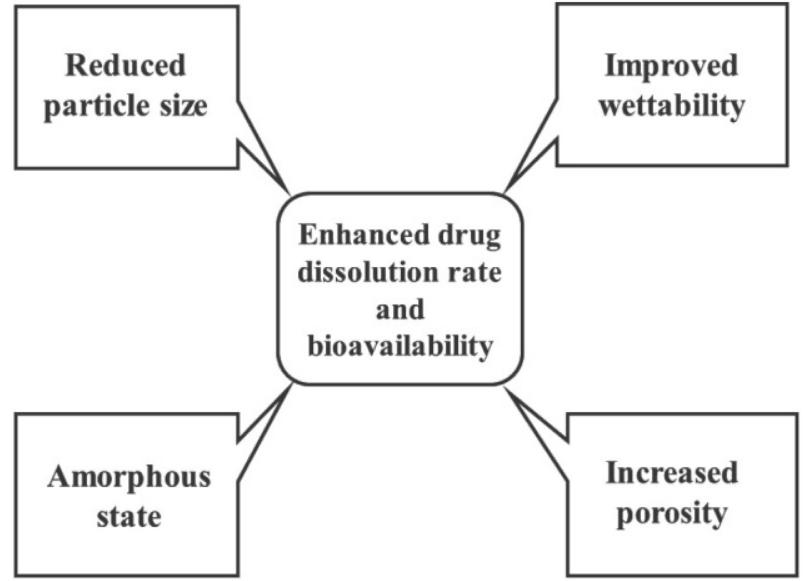Solubilization Technologies for Poorly Soluble Drugs
Inquiry
The oral thin film can carry various active pharmaceutical ingredients (APIs), but taking high doses of APIs is challenging due to the limitation of dosage form size. Therefore, APIs with poor solubility pose a significant challenge to the formulation development of oral thin films. CD Formulation has a variety of solubilizing technologies for poorly soluble drugs, turning poorly soluble drugs into solid dispersions or nanoparticles to increase the drug loading capacity of the oral thin film.
 Fig.1 Pharmaceutical Dispersion Techniques. (XingWang Zhang, et al., 2018)
Fig.1 Pharmaceutical Dispersion Techniques. (XingWang Zhang, et al., 2018)
Advantages of Oral Thin Film
As a relatively new dosage form for the oral route of administration, the oral thin film is postage stamp-sized strips of thin polymeric films formulated to disintegrate or dissolve almost instantaneously when placed onto the tongue. The drug in the oral thin film is absorbed through the oral mucosa, which makes drugs enter the systemic circulation without undergoing first-pass hepatic metabolism.
Our Solubilization Technologies for Poorly Soluble Drugs
In the formulation development of oral thin film, our solubilization technology for poorly soluble drugs is focused on optimizing the solid form of API to improve drug solubility. With our professional crystal innovation technology team and oral thin film preparation development team, CD Formulation provides tailored systematic solutions for poorly soluble drugs to help achieve precise breakthroughs in oral thin film. Our solubilization technologies for poorly soluble drugs include:
Solid dispersion is a kind of dispersion system that exists in solid form, which evenly disperses the drug in the carrier in a highly dispersed state such as molecule, amorphous state, and microcrystal state. Solid dispersion can increase the dissolution of insoluble drugs, improve bioavailability, delay drug release, and increase drug stability, providing more options for oral thin film formulation development.
 Fig.2 Commonly used preparative techniques for solid dispersions. (XingWang Zhang, et al., 2018)
Fig.2 Commonly used preparative techniques for solid dispersions. (XingWang Zhang, et al., 2018)
Oral thin film is unsuitable for delivering drugs with poor water solubility because drugs with poor water solubility have poor oral mucosa drug absorption. Therefore, drugs with poor water solubility are a real challenge in developing oral thin films. Nanosuspensions, as one of the nanoscience approaches, have become a promising development tool for improving the water solubility, dissolution rate and oral bioavailability of poorly water-soluble drugs by reducing the particle size in the oral thin film pharmaceutical industry.
 Fig.3 Development of an orodispersible film containing drug nanoparticles. (Bao-de Shen, et al.,2013)
Fig.3 Development of an orodispersible film containing drug nanoparticles. (Bao-de Shen, et al.,2013)
Advantages of Solubilization Technologies for Poorly Soluble Drugs
- Solubilization technologies can improve the solubility of insoluble API and increase the drug load of the oral soluble film.
- Solubilization technologies provide greater flexibility in the formulation development of oral thin film, allowing for innovative formulations.
- Solubilization technologies enable the customization of drug delivery systems to meet specific requirements, such as sustained release, targeted delivery, or fast-acting formulations, enhancing therapeutic outcomes.
- Improved bioavailability may reduce dosing frequency while achieving the desired therapeutic effect.
Explore Preparation Techniques for Oral Thin Films with Insoluble Drugs
CD Formulation has always been at the forefront of oral thin film formulation development. With the support of our advanced oral thin film preparation technology platform, we provide professional solubilization technology for insoluble active ingredients, including solid dispersion technology, nanoparticle technology, etc. We provide solvent casting, 3D printing technologies, etc., to prepare oral thin film containing insoluble active ingredients.
Preparation Method Screening of Oral Thin Films
We have established advanced technology platforms for preparing oral thin films, and we select the most suitable oral thin films according to the physicochemical properties of customers' APIs to help customers develop high-quality oral thin films.
Fast-Disintegrating Buccal Film Development
Solid dispersion has become an established solubilization technology for poorly water-soluble drugs and is often used to prepare oral-soluble films containing insoluble APIs. We utilize this technology in developing fast-disintegrating buccal films.
Published Data
Technology: Solid Dispersion Technology
Journal: Advanced Pharmaceutical Bulletin
IF: 3.1
Published: 2020
Results: Absorption of the drug and its therapeutic effectiveness are affected by solubility, which is a significant physicochemical factor. Poor aqueous solubility can lead to failure in the formulation development process. One of the most promising and efficient techniques for solubility enhancement is solid dispersion formulation. Solid dispersion can be classified as simple eutectic mixtures, solid solutions, glass solutions and glass suspensions, amorphous precipitation in a crystalline carrier, and compound or complex formations.
 Fig.4 Advantages of solid dispersions. (Avinash Ramrao Tekade, et al.,2020)
Fig.4 Advantages of solid dispersions. (Avinash Ramrao Tekade, et al.,2020)
CD Formulation has extensive experience in solubilizing insoluble drugs and can provide customized solutions to meet customer needs, improve the solubility of active ingredients, and increase the drug load of oral soluble films. If you require our solubilization technologies for poorly soluble drug services, please contact us by phone or email, and our colleagues will get back to you within three working days.
References
- Xingwang Zhang, Huijie Xing, et al. Pharmaceutical Dispersion Techniques for Dissolution and Bioavailability Enhancement of Poorly Water-Soluble Drugs. Pharmaceutics. 2018, 10 (3):74.
- Bao-de Shen, Cheng-ying Shen, et al. Development and characterization of an orodispersible film containing drug nanoparticles. Pharmaceutics. 2013, Vol (85): 1348 - 1356.
- Avinash Ramrao Tekade, yoti Narayan Yadav. A Review on Solid Dispersion and Carriers Used Therein for Solubility Enhancement of Poorly Water Soluble Drugs. Advanced Pharmaceutical Bulletin. 2020, 10(3):359-369.
How It Works
STEP 2
We'll email you to provide your quote and confirm order details if applicable.
STEP 3
Execute the project with real-time communication, and deliver the final report promptly.
Related Services


 Fig.1 Pharmaceutical Dispersion Techniques. (XingWang Zhang, et al., 2018)
Fig.1 Pharmaceutical Dispersion Techniques. (XingWang Zhang, et al., 2018) Fig.2 Commonly used preparative techniques for solid dispersions. (XingWang Zhang, et al., 2018)
Fig.2 Commonly used preparative techniques for solid dispersions. (XingWang Zhang, et al., 2018) Fig.3 Development of an orodispersible film containing drug nanoparticles. (Bao-de Shen, et al.,2013)
Fig.3 Development of an orodispersible film containing drug nanoparticles. (Bao-de Shen, et al.,2013) Fig.4 Advantages of solid dispersions. (Avinash Ramrao Tekade, et al.,2020)
Fig.4 Advantages of solid dispersions. (Avinash Ramrao Tekade, et al.,2020)
